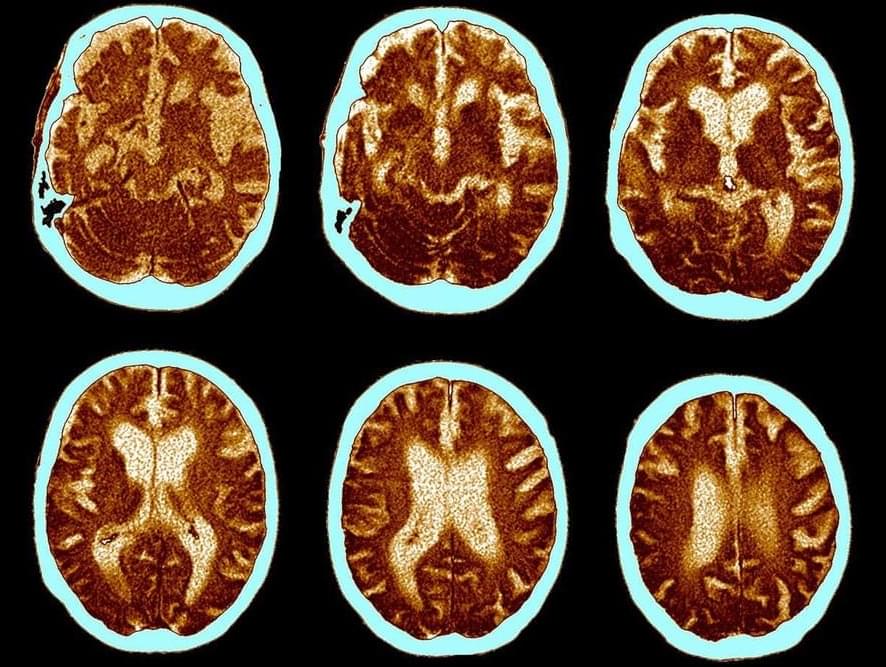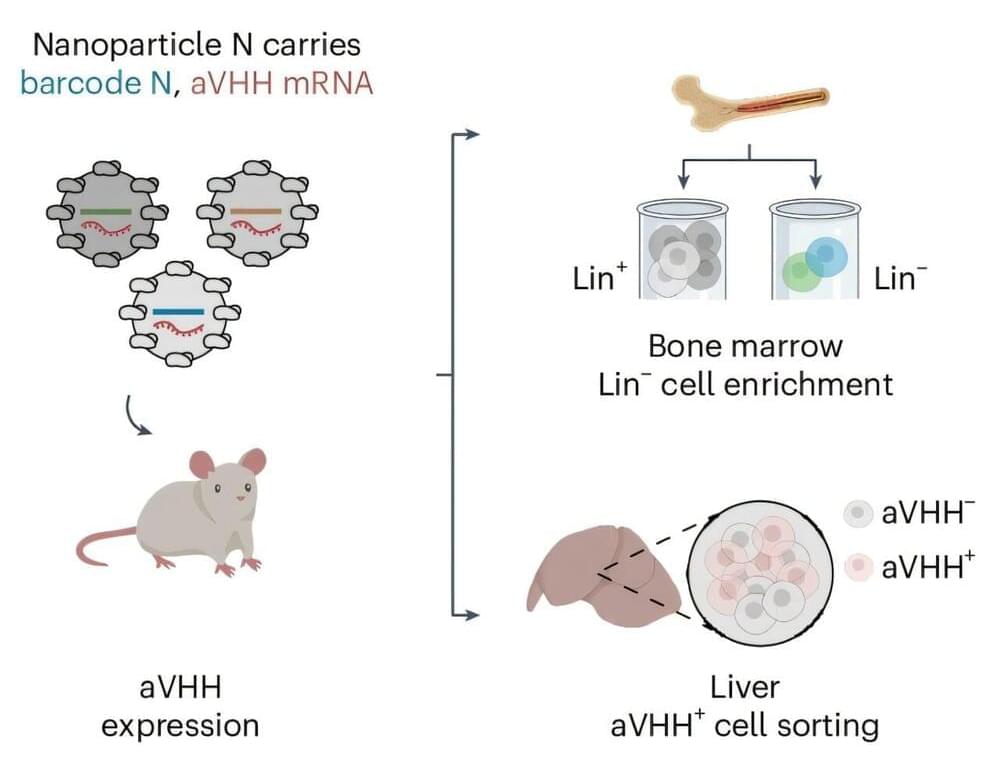RedC Biotech revolutionizing healthcare with technology to mass-produce red blood cells from stem cells; aimed at solving blood donation shortage, it offers safe, contamination-free supply, vital for patients needing frequent transfusions.



Two later-stage trials investigating semaglutide, the drug in Ozempic, for treating Alzheimer’s disease are due to complete in 2025, with potentially big results.
By Grace Wade

Urban construction land expansion damages natural ecological patches, changing the relationship between residents and ecological land. This is widespread due to global urbanization. Considering nature and society in urban planning, we have established an evaluation system for urban green space construction to ensure urban development residents’ needs while considering natural resource distribution. This is to alleviate the contradiction of urban land use and realize the city’s sustainable development. Taking the Fengdong New City, Xixian New Area as an example, the study used seven indicators to construct an ecological source evaluation system, four types of factors to identify ecological corridors and ecological nodes using the minimum cumulative resistance model, and a Back Propagation neural network to determine the weight of the evaluation system, constructing an urban green space ecological network. We comprehensively analyzed and retained 11 ecological source areas, identified 18 ecological corridors, and integrated and selected 13 ecological nodes. We found that the area under the influence of ecosystem functions is 12.56 km2, under the influence of ecological demands is 1.40 km2, and after comprehensive consideration is 22.88 km2. Based on the results, this paper concludes that protecting, excavating, and developing various urban greening factors do not conflict with meeting the residents’ ecological needs. With consideration of urban greening factors, cities can achieve green and sustainable development. We also found that the BP neural network objectively calculates and analyzes the evaluation factors, corrects the distribution value of each factor, and ensures the validity and practicability of the weights. The main innovation of this study lies in the quantitative analysis and spatial expression of residents’ demand for ecological land and the positive and negative aspects of disturbance. The research results improve the credibility and scientificity of green space construction so that urban planning can adapt and serve the city and its residents.

The University of Liverpool has reported a significant advancement in engineering biology and clean energy. A team of researchers has developed an innovative light-driven hybrid nanoreactor that merges natural efficiency with cutting-edge synthetic precision to produce hydrogen—a clean and sustainable energy source.
Published in ACS Catalysis, the study demonstrates a pioneering approach to artificial photocatalysis, addressing a critical challenge in using solar energy for fuel production. While nature’s photosynthetic systems have evolved for optimal sunlight utilisation, artificial systems have struggled to achieve comparable performance.
The hybrid nanoreactor is the product of a novel integration of biological and synthetic materials. It combines recombinant α-carboxysome shells—natural microcompartments from bacteria—with a microporous organic semiconductor. These carboxysome shells protect sensitive hydrogenase enzymes, which are highly effective at producing hydrogen but prone to deactivation by oxygen. Encapsulating these enzymes ensures sustained activity and efficiency.

Middlemen get a bad rap for adding cost and complications to an operation. So, eliminating the go-betweens can reduce expense and simplify a process, increasing efficiency and consumer happiness.
James Dahlman and his research team have been thinking along those same lines for stem cell treatments. They’ve created a technique that eliminates noisome middlemen and could lead to new, less-invasive treatments for blood disorders and genetic diseases. It sidesteps the discomfort and risks of current treatments, making life easier for patients.
“This would be an alternative to invasive hematopoietic stem cell therapies—we could just give you an IV drip,” said Dahlman, McCamish Early Career Professor in the Wallace H. Coulter Department of Biomedical Engineering. “It simplifies the process and reduces the risks to patients. That’s why this work is important.”
It’s estimated that anywhere from three to seven percent of school-age children may have dyslexia, a neurodevelopmental issue that affects reading, spelling, and writing. There are different ideas about why dyslexia occurs, although they relate to dysfunction in brain networks, and are likely due to multiple causes in affected individuals; the disorder may not have a singular underlying cause. Neuroimaging studies of dyslexic individuals have produced inconsistent results.
Since dyslexia has a heritable, and therefore, genetic component, scientists wanted to know more about how genetics and brain mapping could reveal more about the pathology of dyslexia. A new study has shown that carriers of genetic variants that increase the risk of dyslexia also have changes in brain structure, which occur in areas that are related to language, motor coordination, and vision. The findings have been reported in Science Advances.

The breakthrough marks a promising target for drug therapies that slow, possibly reverse, the disease’s development
NEW YORK, NY, December 23, 2024 — Researchers with the CUNY ASRC have unveiled a critical mechanism that links cellular stress in the brain to the progression of Alzheimer’s disease (AD). The study, published in the journal Neuron, highlights microglia, the brain’s primary immune cells, as central players in both the protective and harmful responses associated with the disease.
Microglia, often dubbed the brain’s first responders, are now recognized as a significant causal cell type in Alzheimer’s pathology. However, these cells play a double-edged role: some protect brain health, while others worsen neurodegeneration. Understanding the functional differences between these microglial populations has been a research focus for Pinar Ayata, the study’s principal investigator and a professor with the CUNY ASRC Neuroscience Initiative and the CUNY Graduate Center’s Biology and Biochemistry programs.

As the universe evolves, scientists expect large cosmic structures to grow at a certain rate: dense regions such as galaxy clusters would grow denser, while the void of space would grow emptier.
But University of Michigan researchers have discovered that the rate at which these large structures grow is slower than predicted by Einstein’s Theory of General Relativity.
They also showed that as dark energy accelerates the universe’s global expansion, the suppression of the cosmic structure growth that the researchers see in their data is even more prominent than what the theory predicts. Their results are published in Physical Review Letters.

Could Our Universe Have Been Born from a Black Hole?
Black holes are among the most mysterious and fascinating objects in the universe, known for their powerful gravitational pull that nothing can escape. Interestingly, if you were to compress all the matter in the universe into a single point, you would create a black hole roughly the size of the universe itself. While we do not live inside a black hole, the similarities between black holes and our universe raise intriguing questions about their connection.
Event horizons: no escape in both cases.
A new study from Northwestern Medicine reports that, much like a conductor harmonizes various instruments in an orchestra to create a symphony, breathing synchronizes hippocampal brain waves to enhance memory during sleep.
This is the first time breathing rhythms during sleep have been linked to these hippocampal brain waves — called slow waves, spindles, and ripples — in humans. Scientists knew these waves were linked to memory but their underlying driver was unknown.
“To strengthen memories, three special neural oscillations emerge and synchronize in the hippocampus during sleep, but they were thought to come and go at random times,” said senior study author Christina Zelano, professor of neurology at Northwestern University.